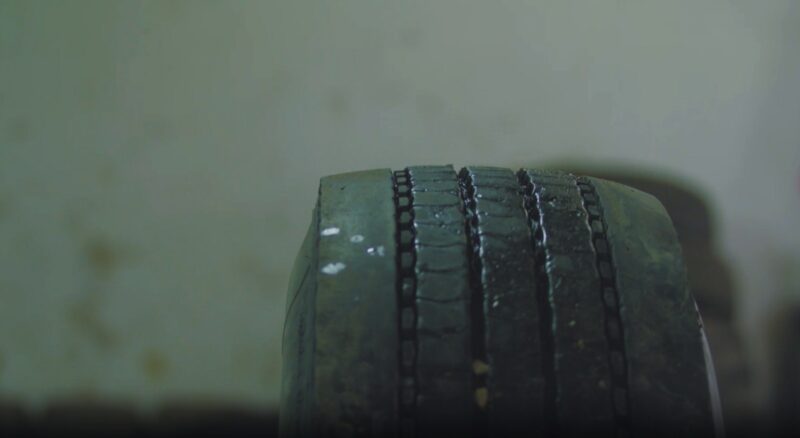I still remember that rainy evening when I was driving back from work, and my car suddenly skidded on a wet patch. It was a heart-stopping moment that made me so angry with myself.
I had been ignoring the signs of wear on my tires, thinking I could stretch their lifespan a bit more. That incident was a wake-up call.
Over the years, I’ve learned a lot about the symptoms of worn-out tires and the importance of timely replacements. In this article, I’ll share 5 crucial signs to watch out for, ensuring you don’t find yourself in a similar situation.
1. Tread Depth
The tread on your tires is designed to provide traction and channel away water. As they wear down, the tread depth decreases, reducing their effectiveness and safety.
Reduced Tread Depth
Tread depth is a clear indicator of tire wear. New tires typically come with 10/32” or 11/32” of tread depth. Over time, as the tire is used, this depth reduces. When it reaches 2/32”, it’s legally worn out in many jurisdictions.
Reduced tread depth can compromise the tire’s ability to grip the road, especially in wet conditions, leading to longer stopping distances and increased risk of hydroplaning.
Tread Wear Indicator Bars
Many modern tires come with built-in tread wear indicator bars. These are small raised bars that become flush with the tire’s tread when it’s time to replace them. If you can see these bars level with the tread, it’s a clear sign that your tires are worn out and need replacing.
2. Uneven Wear Patterns
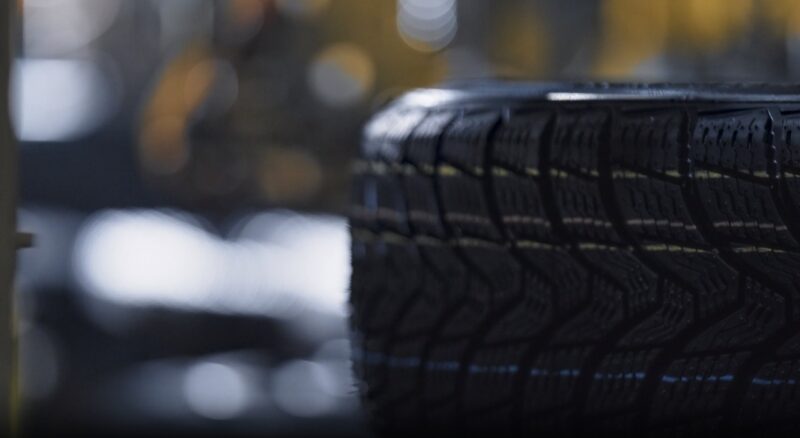
Tires should wear out evenly. However, various factors, including alignment issues or inflation problems, can cause uneven wear patterns, which can compromise the safety and performance of your vehicle.
Feathering or Cupping
Feathering is when the edge of each tread rib develops a slightly rounded edge on one side and a sharp edge on the other. It’s often a sign of poor alignment. Cupping, on the other hand, is when there are dips in the tread.
This can be due to worn suspension parts or imbalanced tires. Both these conditions can cause vibrations, reduced grip, and a decrease in tire lifespan.
Center Wear or Edge Wear
If the center of your tire is more worn than the edges, it’s often a sign of over-inflation. Conversely, if the edges are more worn than the center, it’s typically due to under-inflation. Both conditions can lead to reduced tire lifespan, compromised safety, and an uncomfortable ride.
3. Cracks and Bulges
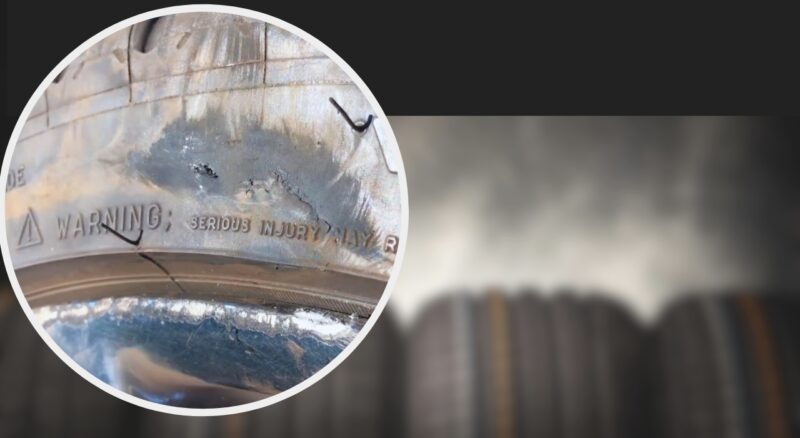
The rubber compounds in tires degrade over time, especially when exposed to extreme temperatures and the elements. This can lead to visible cracks or bulges, signaling that your tires might be nearing the end of their life. You should learn more about signs, causes, and prevention of having cracked tires.
Sidewall Cracks
The sidewall of your tire is crucial for maintaining its shape and ensuring proper performance. Over time, UV rays, ozone, and other environmental factors can cause the rubber to degrade, leading to cracks.
If you notice any cracks in the sidewall, it’s a sign that the tire’s structural integrity might be compromised.
Bulges and Blisters
Bulges or blisters on a tire are a sign that the tire’s internal structure has been damaged, allowing air to reach the outer layers. This can be due to hitting a pothole or other road hazards.
These bulges can lead to a sudden blowout, so it’s essential to replace any tire that shows these symptoms immediately.
4. Vibrations and Noises
While some road noise is expected, especially on rough terrains, unusual vibrations or increased tire noise can be a sign of worn-out tires or other underlying issues.
Excessive Vibrations
While driving, if you start to feel excessive vibrations, especially at certain speeds, it could be a sign of tire wear. Uneven tire wear, balance issues, or internal tire damage can cause these vibrations.
Not only is this uncomfortable for the driver and passengers, but it can also lead to further wear and tear on your vehicle’s suspension and alignment systems.
Increased Road Noise
Tires are designed to minimize road noise. However, as they wear out, especially if the wear is uneven, they can become noisier. If you start to notice a consistent increase in road noise, especially on familiar terrains, it might be time to inspect your tires and consider replacements.
5. Age of the Tire
Even if a tire looks in good condition, its age can be a significant factor in its performance. Rubber degrades over time, and older tires, even with ample tread, might not offer the same level of safety as newer ones.
Manufacture Date
Every tire comes with a DOT code, which includes the week and year the tire was manufactured. For instance, “0520” would mean the tire was made in the fifth week of 2020.
Tires that are more than six years old are generally considered to be nearing the end of their safe usable life, regardless of tread depth.
Old Tires = Reduced Performance
As tires age, the rubber becomes less flexible and can dry out, leading to reduced grip, especially in wet conditions. Older tires might also be more prone to sudden blowouts, especially when exposed to high temperatures or heavy loads.
It’s always a good idea to consult with a tire professional if you’re unsure about the age or condition of your tires.
Tire Impact on Fuel Efficiency
Tires play a significant role in your vehicle’s fuel efficiency. Worn-out tires can increase rolling resistance, leading to higher fuel consumption.
Reduced Fuel Efficiency
Worn-out tires, especially those with uneven wear patterns, can increase your vehicle’s rolling resistance. This means your engine has to work harder to move the vehicle, leading to increased fuel consumption.
By ensuring your tires are in good condition and properly inflated, you can optimize your vehicle’s fuel efficiency.
Environmental Impact
Beyond the immediate impact on your wallet, reduced fuel efficiency also means increased carbon emissions. This has a broader environmental impact, contributing to air pollution and climate change.
Maintaining your tires not only benefits you directly but also plays a part in reducing your carbon footprint.
Safety Implications
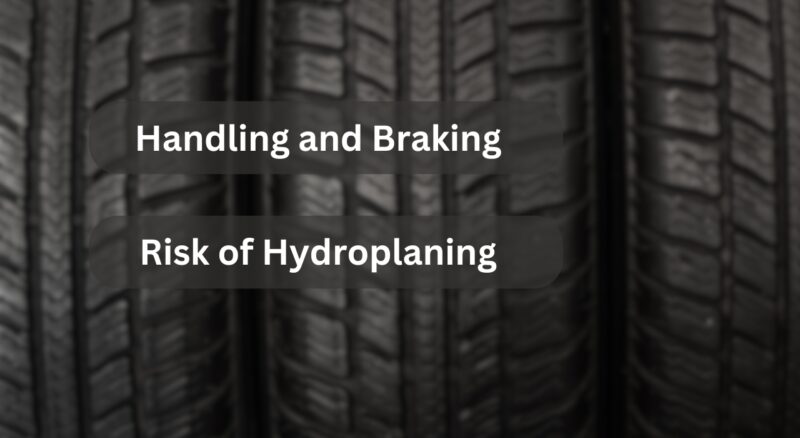
The safety implications of worn-out tires cannot be overstated. Tires in poor condition can compromise the handling and braking of your vehicle.
Handling and Braking
The tread on your tires is designed to grip the road, especially in challenging conditions like rain or snow. Worn-out tires can significantly reduce your vehicle’s handling capabilities, making it harder to steer, especially in emergencies.
Additionally, braking distances can increase, putting you and other road users at risk.
Risk of Hydroplaning
Hydroplaning occurs when a layer of water builds up between the tire’s tread and the road surface, leading to a loss of traction. This can cause the vehicle to skid or slide uncontrollably.
Worn-out tires, especially those with reduced tread depth, are more susceptible to hydroplaning, especially at higher speeds or in heavy rain.
Economic Implications
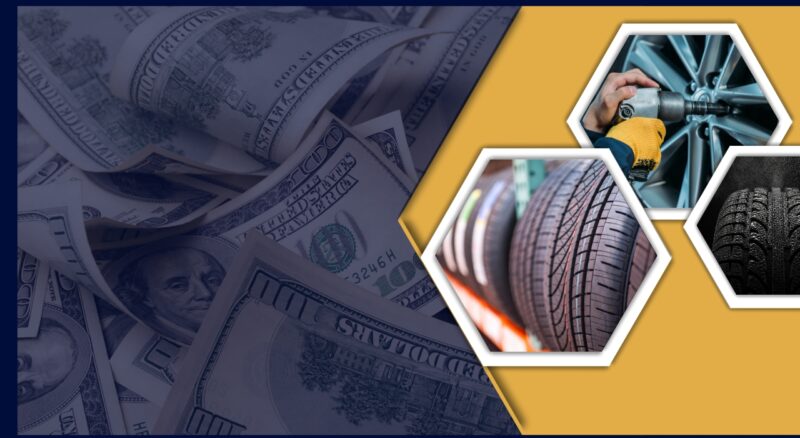
Beyond safety and performance, there are economic implications to consider when driving on worn-out tires.
Increased Maintenance Costs
Driving on worn-out tires can lead to other vehicle issues. For instance, it can put additional strain on your vehicle’s suspension system or lead to alignment problems.
This can result in higher maintenance costs in the long run, as you might need to address these secondary issues caused by poor tire condition.
Tire Replacement Costs
While all tires will need to be replaced eventually, driving on them past their safe usable life can lead to more frequent replacements.
This not only means higher costs for the tires themselves but also for the associated services like mounting, balancing, and alignment.
FAQs
How Often Should I Check My Tires for Signs of Wear?
It’s recommended to do a visual check of your tires at least once a month. Additionally, a more thorough inspection by a professional should be done at least once a year or during your vehicle’s routine maintenance checks.
Can I Just Replace One Worn-Out Tire Instead of All Four?
While it’s possible to replace just one tire, it’s usually recommended to replace tires in pairs (both front or both rear) to ensure even wear and maintain balanced handling.
If one tire is showing significant wear while the others are not, it might indicate an alignment or suspension issue that should be addressed.
Does Tire Rotation Help in Reducing Wear?
Yes, regular tire rotation can help ensure even tire wear. By periodically changing the position of each tire on your vehicle, you can balance out the wear patterns, potentially extending the lifespan of the tires and ensuring consistent performance.
How Does Tire Pressure Impact Tire Wear?
Maintaining the correct tire pressure is crucial for even tire wear. Over-inflated tires tend to wear out more in the center, while under-inflated tires wear more on the edges. Regularly checking and adjusting your tire pressure can help prevent these uneven wear patterns.
Is There a Specific Season or Climate that Accelerates Tire Wear?
Extreme temperatures, both hot and cold, can accelerate tire wear. Hot climates can soften the rubber, leading to quicker wear, while cold climates can make the rubber harder and potentially more brittle.
Additionally, driving on rough or unpaved roads can also speed up the wear process.
Summary
In wrapping up, the implications of driving on worn-out tires extend beyond the immediate risks. From economic considerations to environmental concerns and, most importantly, safety, it’s crucial to ensure they are in optimal condition.
Regular checks and understanding the broader impacts of worn-out tires can help you make informed decisions for both your safety and your wallet.
